Raised garden beds are great for many reasons–they keep pests out, they’re easier on your back, and they are striking to look at. One of our favorite things about them is that they’re so easy to DIY.
As the name suggests, this type of gardening involves placing a flower bed in a wooden frame or container. It’s literally raised off of the ground so it’s different than using a planter with a bottom.
There are lots of pluses to this type of planting. For one, green-thumb enthusiasts can draw out their planting season since the soil in raised bed gardening warms quicker than in a conventional garden.
Also, in springtime, you can start planting crops such as peas or Brussel sprouts much earlier.
Then there’s the fact that you can garden anywhere in your yard, not just in places where the soil is naturally suitable.
So, if you’re ready to start your very own garden bed and see the benefits first hand, keep reading!
We have curated a list of some of our most beloved garden bed designs for you below.
Raised Garden Bed Design Ideas
Some of our favorite raised garden beds have little bits of their owner’s creativity and personality throughout them.
You can paint the outside, add little garden decorations inside, or experiment with different materials to get a unique result.
So, if you are planning to create your own garden bed, take a look at the inspiring ideas before. They can help you get started.
That said, remember it is always up to you on how you will style your garden. Don’t just recreate these designs–make them your own!
1. Simple Raised Garden Bed
Sometimes, simple is best. A narrow or tight backyard is not an issue with this 2×2 raised garden bed. It works for both flower gardens or herb gardening.
This basic wooden bed is perfect for starting out with this type of gardening. As you go along, you can add extra boxes to make a bigger garden.
If you’re not sure where to get started, you might want to choose a kit instead. A kit will arrive with all of the pieces needed.
2. Raised Hexagonal Garden Bed
If you are searching for something more interesting, here’s an idea for you. This geometric raised garden bed design can add character to your backyard.
This design splits the garden bed into six sections. This allows you to grow more than one type of green thing in one central bed. It’s great for herbs and small plants.
3. Raised Herb Garden Bed
Herb lovers will surely treasure this garden bed. It’s portable and easy to fit into any corner of your garden or yard. Below the bed itself you can even store gardening tools.
This idea is particularly inspired if you want to start a small herb garden. Herbs don’t need much soil and they don’t take that much space either.
4. Multi-Level Garden Planter
With a multi-level planter, you can keep pets and stray animals from getting to your precious plants. Also, it allows summer plants on top to bask in the sun while providing shade to cool-season plants on the lower layer.
If you have limited space, multi-level planters help plants “grow up” instead of out. Within just a square foot or less of space, they can store a huge heaping of herbs and other plants.
These garden beds look great against a wall. They are technically “planters,” so you can use them indoors or outdoors.
5. Pyramid Raised Garden Bed
A pyramid raised garden bed allows hassle-free harvesting. Besides this, the design is smooth to maintain.

The best thing about a pyramid set-up is that you get planter boxes of various sizes. So, if you want to grow more of a crop and less of another, a pyramid structured holder will make that easier.
6. Corner Tiered Raised Garden Bed
This corner tiered raised garden bed is ideal if you’re planning to grow plants on your deck or balcony. You can choose to grow a mix of plants in it to create a nice play of colors and textures.
Although it’s similar to a pyramid raised bed, it differs in that you can place it easily in a corner. We love this for a patio garden or any place where two walls meet.
Plus it looks cool and can transform a boring corner into an interesting one.
7. Raised Garden Bed with Built-in Stools
A raised garden bed with built-in stools is just perfect for anyone who loves to garden but doesn’t like to kneel on the ground or lean over for extended periods of time.
This one’s super functional as well as interesting to look at. Although at first glance it might seem like a complicated design to attempt, it only requires a few extra boards and nails.
Build a regular square raised garden bed and then add the seating after.
8. Medium Raised Wood Planter
Don’t have all that much room for gardening? Try this medium raised wood garden bed design. This is actually more of a planter, but it works well as a small raised bed.
If you’re planting annual crops at the end of a growing season, this simple bed might be a hit.
Tip: Place your raised bed where the plants in it get the optimal amount of sunlight. Aesthetic considerations come second in this case!
9. Raised Garden Square Foot Grid Bed
Do you want to grow a lot of different plants and need a ton of space? Try the raised garden square foot grid bed. The design is straightforward but allows for serious gardening.
As you can see in the example above, you can use garden wire to create dividers in the bed. It will help you plant everything at the right distance from each other and can manage them with greater ease.
10. Cinder Blocks Raised Garden Bed
Until this point, the raised beds we showcased have been crafted from wood. This isn’t the only option, though. If you’re not a fan of sawing, measuring, and using a power tool, you can use cinder blocks instead.
This can be an affordable raised garden bed option since you can often find cinder blocks like the ones pictured above at a very low cost. Then, you’d only need to buy the soil and seeds or plants.
11. Medium 4×4 Raised Bed Garden
This medium 4×4 raised bed has a lot of room for roots to loosely grow and get a stronger grasp on the soil. Not to mention, with its size you can be sure your soil will stay in place plus endure kids or pets bumping into it.
These low-maintenance beds are great if you can’t grow things in the ground because of heavy clay or irrigation issues.
Tip: Keep in mind that most plants and vegetables will need at least six hours of sunlight every day. So placement is very important.
12. U-Shaped Large Raised Garden Bed
If you’re serious about growing a thriving organic garden, take a look at this U-shaped raised garden bed. It provides lots of gardening space with easy access to all plants.
One thing we love about this design is that a gardener can kneel or sit in the middle of the U and reach all of the plants on every side.
13. Enclosed Raised Garden Bed
Are pests a problem? This enclosed garden bed is for anyone seeking something sturdy and durable. The walls will make sure that mischievous pets and other critters will leave your plants alone.
Not only are your plants protected with this type of bed, but it also makes shade gardening easier if you decide to cover parts of it.
You’ll have to spend extra on the wood and wire mesh, but it’s a good long-term investment.
14. Used Tire Raised Garden Bed
Do you have a lot of tires lying around? Put some to good use by creating a used tire raised garden bed. Tires are a perfect barrier for plants. You can paint them and place them anywhere you’d like.
This is a cheap and easy option to create a raised garden bed since people throw tires away every day. All it takes is a bit of dumpster diving. Tire shops often have tires they are looking to get rid of as well.
15. Greenhouse Raised Garden Bed
This hoop house raised bed design protects your plants from the elements in all seasons. It’s a smart choice for windy or extremely sunny areas that might be damaging to plants.
This may not be the most stylish option, but if you’re needing to keep wind and water away, go for it especially since it’s great for winter gardening.
DIY: How to Build a Raised Garden Bed
You can build your own raised garden bed in less than a day, provided you have the right materials.
Here’s what you’ll need to build a classic raised bed with wooden frames:
- A cordless drill that has predrilling bits
- Two 2x8x8-foot boards of rot-resistant wood like pine, cedar, or redwood
- 4 wooden chunks of a 2×4 cut to the width of the board for your garden bed
- Outdoor wood screws that are at least 2.5″ (longer is fine)
- The right soil mix
- Plants of your choice
Believe it or not, this can be done on a budget. You can build an affordable raised garden bed for under 20 bucks!

Finding suitable materials is the most important part of the whole process. But the good news is that you probably have at least some of them already. Even if you don’t, they should be fairly easy to get.
Raised Garden Bed Building Instructions
Follow the next steps to build a raised garden bed in your garden or backyard the easy way, without spending too much on the materials.
Total time: 1 day
Step 1 – Choose the Right Soil
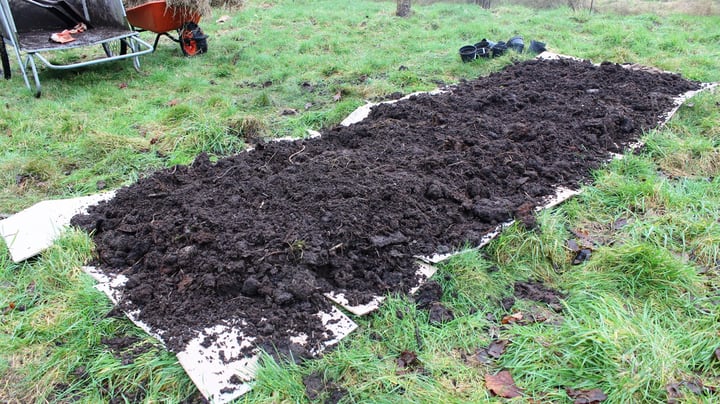
Choosing the right soil for your raised garden bed is arguably half the battle. After all, the whole purpose is to keep your garden alive, right?
Tip: In all of our trial and error, we have found that the best soil mixture contains 60% topsoil, 30% compost, and 10% potting soil.
Because of spacing and regular use of compost, this type of gardening results in a higher yield compared to conventional row gardening.
Step 2 – Know What You’ll Be Planting in It

Knowing the requirements the plants will have will enable you to place the raised bed in the right spot in your garden or yard–or make room for it.
For example, if you plan to grow shade-loving plants and vegetables you can get away with building the raised bed in the shade of a wall or behind the house.
Make a list of the plants you will be growing in it.
Step 3 – Ensure Easy Access
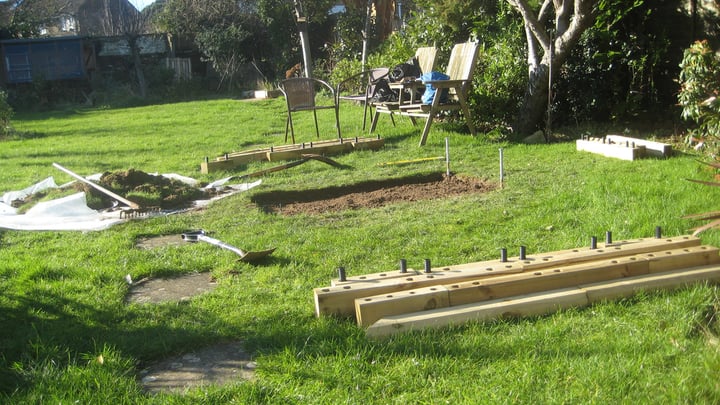
Plant requirements aside, you want to be able to easily access the raised bed and bring water to it.
You also want to be able to reach all areas of it with ease–something which can influence the design you choose.
Square, rectangular, and U-shaped raised garden beds tend to be the most convenient.
Step 4 – Build the Frame

The frame around your raised garden bed sets the foundation for all the plants inside it. Build a flimsy frame, and all your work could come crashing down with the first heavy rain.
If you’re building your first raised bed, opt for a simple square or rectangular frame you can put together by screwing into place the wooden boards and wooden chunks we mentioned above.
The raised garden bed should be at least 6 inches deep and preferably longer.
Tip: Don’t forget that instead of a conventional frame you can also use old tires or other similar containers.
Step 5 – Plant and Water
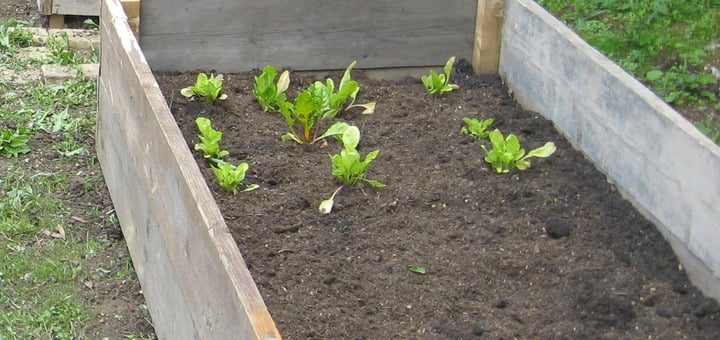
Don’t fill the frame with too much soil but make sure there’s enough soil to contain the roots of the plants.
Plant your chosen vegetables or flowers maintaining an appropriate distance from them (check our growing tips).
With regards to watering, keep in mind that raised garden beds need frequent watering compared to traditional gardens since water in them often drains quicker.
If after checking, you notice that your soil is dry one inch beneath the surface, then it is time to water your garden.
In the summer, you may need to water multiple times a day but it will still depend on the stage and type of your plant.
Tip: If your schedule does not permit this, then it’s best that you do deep watering instead of shallow watering a couple of times per week.
Raised Garden Bed Kits for Sale
What if you don’t have the time or the energy to build a DIY raised garden bed? You could buy a ready made one made from wood or other materials.
You’ll find plenty of raised garden bed kits online, ranging from the cheap and small to the stylish and sophisticated. Here are some of the best products out there right now.
Raised Garden Bed Frequently Asked Questions
Many gardeners are building raised beds these days, so we’re hearing lots of questions on the subject. We’ve put together some of the most common questions and answered them for you.
Find the answers below.
How deep should a raised garden bed be?

A raised garden bed should be at least 6 inches deep.
The depth really depends on how deep the roots run on the things that you’re planting. Usually, twelve inches is sufficient. Check our raised garden bed DIY guide for more tips.
Do raised garden beds have a bottom?

No. Raised garden beds are different from planters that have a bottom. A raised garden bed is built from the ground up. This allows plant roots to go further and receive additional nutrients from the soil underneath if needed.
Should I put rocks at the bottom of the raised garden bed?

If you are planting things that require drainage space, you might consider putting rocks at the bottom of your raised garden bed since extra moisture can destroy the soil.
Rocks can help gardeners avoid root rot and other problems. This is especially true for delicate produce and plants.
Where do you put raised vegetable beds?
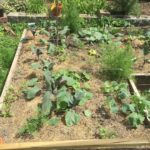
Raised vegetable beds must be placed in a sunny area. This does not have to be in a backyard although that’s commonplace. If the area doesn’t drain well, you’ll need to make a way to drain the soil.
Raise That Garden Bed, Will You?
In addition to creating more planting space, building a raised garden bed is a good way to tap into the health benefits of gardening.
And the good news is that you don’t have to spend too much money or time on it or go out of your way to build it.

Raised beds in gardening are an old concept and if they are still around it means they work.
So if you’re still a bit on the fence about, we say go for you! You probably won’t regret it!
We’d love to hear about your final raised garden bed design. Drop us a comment and tell us all about it.
We hope you enjoyed this post–catch you next time!

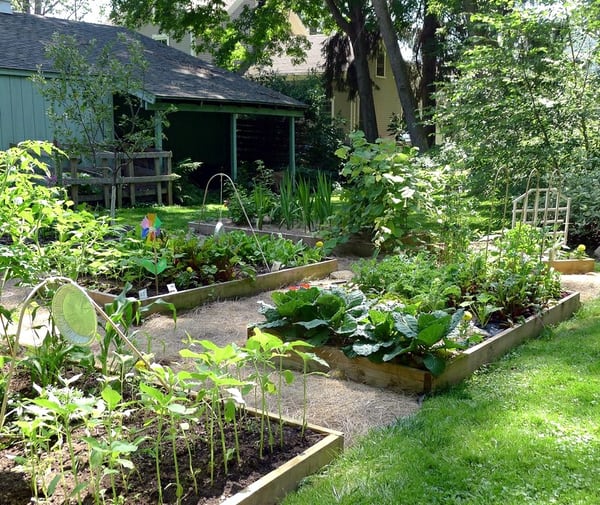
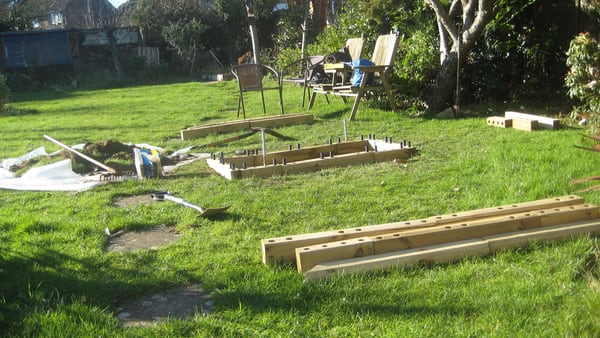

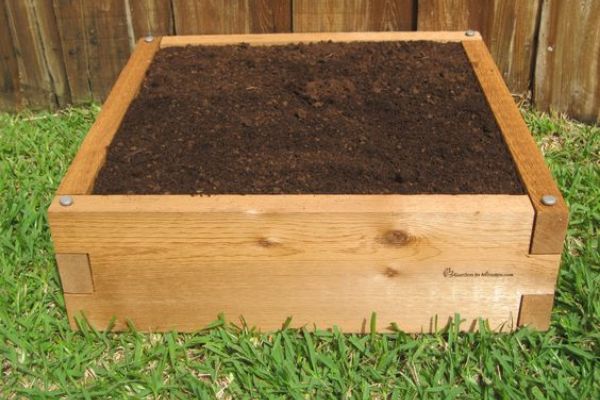





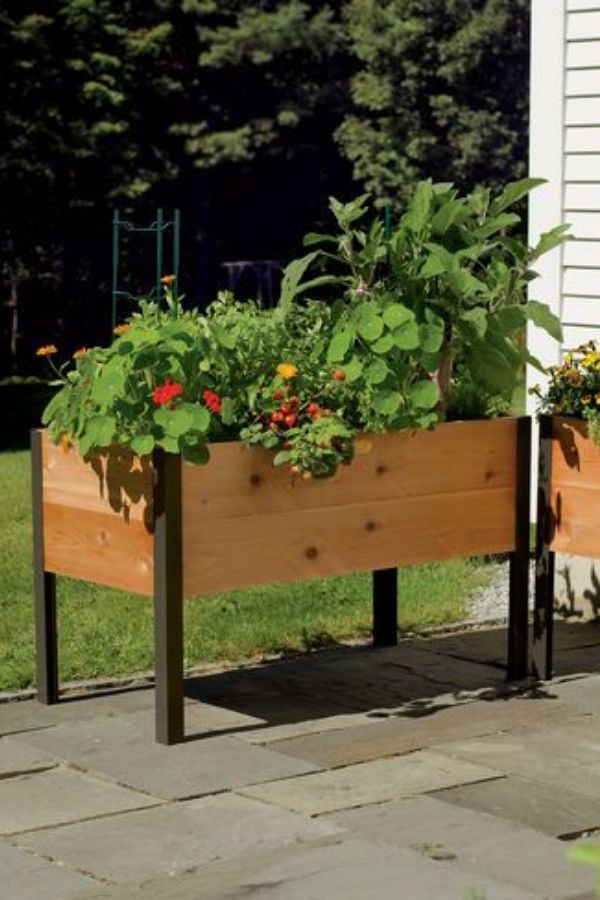

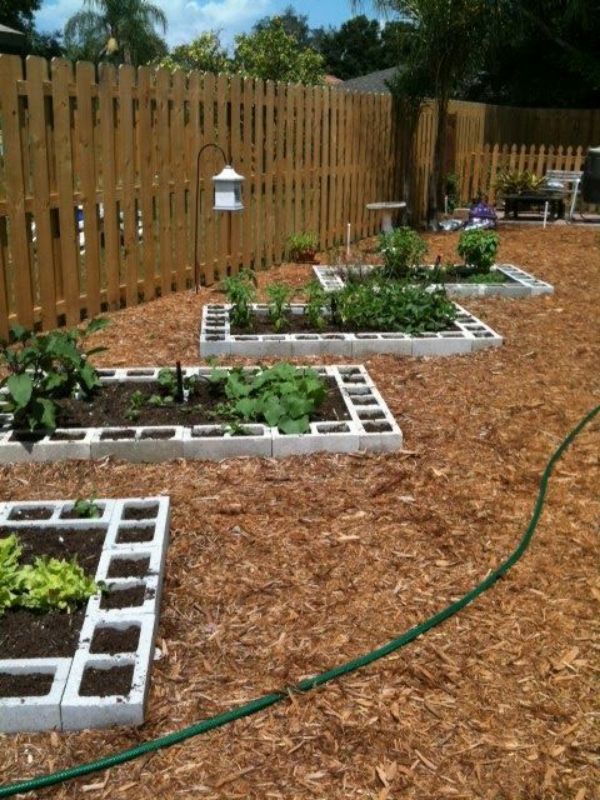
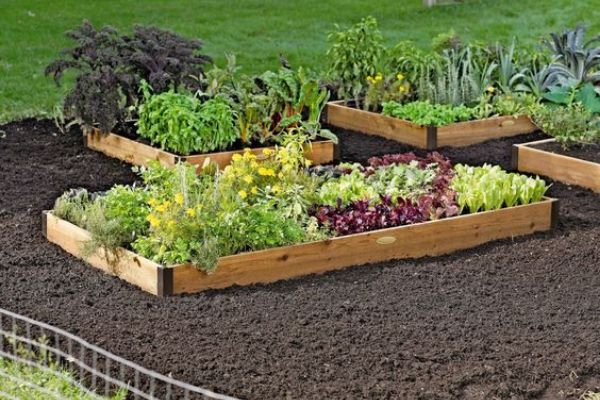


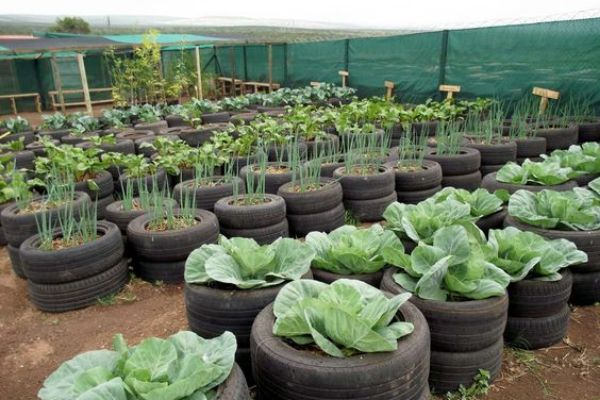


Your way of telling everything in this article is truly pleasant, every one be capable of without difficulty understand it! Thanks a lot.